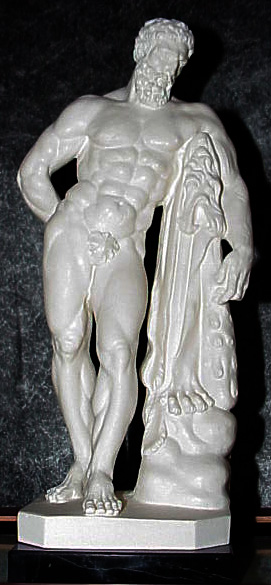 Stendhal’s dazzling, fast-paced The Red and the Black: A Chronicle of 1830is one of my all-time favourite novels. It’s written with an urgency that’s still palpable, almost 200 years on.
Stendhal’s dazzling, fast-paced The Red and the Black: A Chronicle of 1830is one of my all-time favourite novels. It’s written with an urgency that’s still palpable, almost 200 years on.
The Red and the Black was published in France in 1830, some 15 years after the fall from power of Napoleon Bonaparte, Stendhal’s lifelong hero. The novel is a fierce attack on France following Napoleon’s demise, the story of a young man determined to find heroism in those vacuous days, and a lament for heroic times gone by:
‘Since the fall of Napoleon, any appearance of gallantry has been strictly banned from provincial mores … Boredom has become acute. The only pleasures are reading and agriculture.’
The hero of The Red and the Black, Julien Sorel, is a young man with a ‘mad passion for Bonaparte’. Inspired by Napoleon, Julien dreams of rising to the glorious heights of French society from his meagre peasant origins. Handsome, proud and overly sensitive, driven by passion and ambition like Napoleon, Julien is convinced a great destiny awaits him. Unlike his older brothers who work in their father’s sawmill, Julien learns to read and write. His prodigious memory and astonishing ability to quote entire passages from the New Testament in Latin secure him his first job, as tutor to the sons of the Mayor of Verrieres, an imaginary town in the foothills of the Jura Mountains where Julien grows up.
Julien soon realises that in post-Napoleonic France the surest path to success for a poor peasant boy is the priesthood, just as the military had been in Napoleon’s day: ‘All right then! he said to himself, laughing like Mephistopheles, I’ve got more intelligence than they have; I can pick the right uniform for my century. And he felt a resurgence of ambition and attachment for the robes of the priesthood.’
But the Church and its uniform are not the only weapons in Julien’s arsenal for his assault on society. He uses another equally potent one: seduction. While struggling with the demands of the priesthood, including the hypocrisy it requires, Julien plans to advance by seducing beautiful, powerful women. Just as his heroes use their intelligence, looks, passion and energy as weapons, Julien intends to do the same.
Stendhal based The Red and the Black on two contemporary court cases he read about in one of his favourite journals, which recorded daily court proceedings. The journal’s extraordinary tales of extreme crimes of passion among ordinary people convinced Stendhal that the energy, passion and imagination required for the future of France lay not in the hands of aristocrats and the bourgeoisie but in those of the workers and peasants like Julien Sorel.
At every turn on Julien’s faltering path to success, he chooses imagination over bland materialism. ‘Like Hercules he found himself with a choice – not between vice and virtue, but between the unrelieved mediocrity of guaranteed well-being, and all the heroic dreams of his youth.’ At the same time, however, Julien wonders if he has what it takes for success, worries that his need to earn a living will exhaust him before he’s achieved glory: ‘I’m not made of the stuff of great men, since I’m afraid that eight years spent earning my living may drain me of the sublime energy which gets extraordinary feats accomplished.’
As well as being a sensitive portrayal of a new kind of hero, The Red and the Black is a brilliant satirical portrait of French society. Stendhal writes fiercely of his contemporary world, the post-Napoleonic reign of the reactionary Charles X. Stendhal lived in Paris from November 1821 to November 1830, and his novel is based on first-hand experience of the corruption, hypocrisy and self-interest that prevailed. In a scene that could come from Yes, Prime Minister, the counter-revolutionary French aristocrats plot the invasion of their own nation, France:
‘Foreign kings will only listen to you when you announce the presence of twenty thousand gentlemen ready to take up arms to open the gates of France to them. Guaranteeing this support is a burden, you’ll tell me; gentlemen, our heads remain on our shoulders at this price.’
Stendhal’s social commentary is astute. He understands the power of the priesthood and perhaps too the dawning power of the press: ‘Yet men like this [priests] are the only moral teachers available to the common people, and how would the latter fare without them? Will newspapers succeed in replacing priests?’ He also diagnoses the symptom of the increasingly influential new class, the bourgeoisie, which will so nauseate Flaubert: ‘BRINGING IN MONEY: this is the key phrase which settles everything in Verrieres.’
Balzac commented that Stendhal’s The Charterhouse of Parma (1839) ‘often contains a whole book in a single page’, and so it is with The Red and the Black. Stendhal writes with such urgency, cramming his pages with such remarkable, breathtakingly unexpected events, that his novel encompasses the length and breadth of a whole society. His chatty narrator often breaks from the story to engage directly with the reader, discussing current fashions, politics, mores and modes of thought, which gives the novel a topical immediacy that was unheard of in Stendhal’s day:
‘in Paris, love is born of fiction. The young tutor and his shy mistress would have found three or four novels, and even couplets from the Theatre de Madame, clarifying their situation. The novels would have outlined for them the roles they had to play, and given them a model to imitate.’
Stendhal was born Marie-Henri Beyle in Grenoble in 1783. His beloved mother died when he was seven and he was left in the care of his domineering father, a barrister in Grenoble’s high court of justice. As soon as he could, Stendhal left Grenoble for Paris to seek his fortune and escape his father, whom he resented.
Stendhal arrived in Paris at a fateful moment: in 1799, the day after Napoleon Bonaparte took power with the coup d’etat of 18 Brumaire. Napoleon was to be the shaping force not only of the age but of Stendhal’s life and novels. Stendhal had shown an interest in literature and mathematics, and his father expected him to go to Paris’s Ecole Polytechnique. Instead, Stendhal was taken up by his father’s cousin Noel Daru and his sons Pierre and Martial, powerful members of Napoleon’s bureaucracy. Pierre and Martial educated their provincial relative in the ways of a Parisian dandy and found him a position as a clerk in Napoleon’s Ministry of War. When Napoleon decided to attack the Austrians in Italy, Stendhal was offered a commission and travelled through the Alps to join Napoleon’s army. There he discovered the pleasures of Italian culture, especially in Milan, and the hardships of military life. His dreams of a noble military career were dashed by the coarseness of soldiers and in 1802, aged 19, Stendhal returned to Paris and began to write.
In Paris Stendhal was given one of the top government positions in the empire and mixed with the cream of Parisian society, including Napoleon’s sisters, Mme de Stael, Mme Recamier, Prince Metternich and the painter Jacques-Louis David. He even had an audience with the empress, Marie-Louise, before joining Napoleon’s army on its invasion of Russia, where he witnessed the burning of Moscow.
When Napoleon was defeated in 1814, Stendhal could not bring himself to live in Restoration France, so he settled in Milan. Here he published his first books on art, music and travel, under the pseudonym ‘Alexandre Cesar Bombet’. In the climate of fear and opportunism in France at the time, spies and counterfeit activities were rife. Beyle himself adopted about 200 different names, including ‘William Crocodile’, and finally settled with ‘Stendhal’ for his novels, a name that he’d used for the first time in 1817 when he published his first travel book Rome, Naples and Florence in 1817. Stendhal, who never married, had many affairs and fell madly in love with Metilde Dembowski in Milan in 1818. His unrequited passion for her haunted him for the rest of his life.
Stendhal left Milan in 1821 and returned to Paris, where his sharp intellect and original wit were much celebrated in the salons. His first novel, Armance, was published in 1827. Three years later, aged 47, he published The Red and the Black, dedicated ‘To the Happy Few’. The ‘happy few’ were the small group of people who espoused the view of life Stendhal named ‘beylism’, those who believed in the value of passion, energy and originality, who constantly questioned the customs and codes of the day while appearing to conform to them, in order to be happy.
Following the July Revolution of 1830 and the ascendancy of ‘the bourgeois monarch’ Louis-Philippe, Stendhal was appointed French consul in the port of Civitavecchia in the Papal States. He eventually returned to Paris due to ill-health – probably syphilis – and in 1842, after dining with the Minister of Foreign Affairs, Stendhal collapsed in the street and died soon after. His self-composed epitaph was: ‘He lived, He wrote, He loved.’
Stendhal predicted that his work would not be appreciated for another fifty years. His novels, with their penetrating, ironic portraits of contemporary society, were shocking in his day and his genius was not widely appreciated until after his death. Many later writers of the 19th and 20th centuries were influenced by his vision, including Nietzsche, Proust and Camus. In his novel Vertigo (published in English in 1999), the German writer WG Sebald draws on Beyle’s recollections of his youthful military adventures in Napoleon’s army. The opening section of the novel is called ‘Beyle, or Love is a Madness Most Discreet’.
The widely documented ‘Stendhal syndrome’ is named after Stendhal’s ecstatic, hallucinatory response to the frescoes in a chapel of the church of Santa Croce in Florence, about which he wrote: ‘Absorbed in the contemplation of sublime beauty … I reached the point where one encounters celestial sensations … Everything spoke so vividly to my soul.’ From the early 19th century on there have been many stories of people fainting before the beautiful art of Florence, but the syndrome was only named in 1979 by Italian psychiatrist Dr Graziella Magherini (at the time, chief of psychiatry at Florence’s Santa Maria Nuova Hospital), who saw over 100 cases of the syndrome, ranging from panic attacks to cases of madness that lasted days.
Cross-posted from bookish girl.











